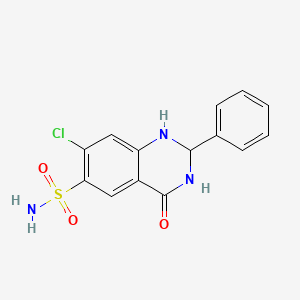|
Name: Para-Methylfentanyl (N-(4-methylphenyl)-N-(1phenethylpiperidin-4-yl)propionamide; also known as 4-methylfentanyl)
Type: Synthetic opioid
AKA: N/A

|
|
II. Natural Derivative
Synthetic substance, no natural derivative
 |
|
III. Chemical Profile (IUPAC name)

|
|
IV. History
Para-methylfentanyl, a synthetic opioid, was first synthesized in the late 20th century. It is an analog of fentanyl with increased potency and modified effects. Its introduction is part of a broader trend in developing more potent opioids. Para-methylfentanyl has been associated with a significant number of overdose cases due to its potency. It is used primarily in medical settings but has also appeared illicitly, prompting regulatory responses.

|
|
V. Legal Information
Para-Methylfentanyl is a potent synthetic opioid with high abuse potential. It is controlled under opioid laws due to its risk of addiction and misuse. [Source: UNODC].
US Federal Schedule - I
Schedule I drugs, substances, or chemicals are defined as drugs with no currently accepted medical use and a high potential for abuse. Some examples of Schedule I drugs are: heroin, lysergic acid diethylamide (LSD), marijuana (cannabis), 3,4-methylenedioxymethamphetamine (ecstasy), methaqualone, and peyote.
Key US Federal Policies:
Controlled Substances Act. Public Law: Public Law 91-513 (text can be found on GovInfo) (https://www.dea.gov/drug-information/csa). Date enacted: October 27, 1970.
|
|
VI. Physical Effects
Para-methylfentanyl is a highly potent synthetic opioid. It acts primarily as a downer, leading to sedation, severe respiratory depression, and constricted pupils. Short-term use is effective for pain relief, but long-term use increases the risk of addiction, tolerance, and significant health issues. Overdose can result in fatal respiratory depression. Safe use demands strict dosing guidelines and medical supervision. Recent studies emphasize its potency and the high risk of overdose compared to other opioids.  |
|
VII. Psychological Effects
Para-methylfentanyl, an opioid, affects opioid receptors, causing euphoria and cognitive impairment. Immediate effects include mood enhancement and pain relief, while long-term use can result in dependence and psychological issues such as depression. Effects last several hours, with significant mental health risks with chronic use.
 |
|
VIII. Culture
Para-methylfentanyl is a synthetic opioid with potent effects. Its cultural significance is tied to the opioid crisis and the challenges of managing synthetic opioids. Media coverage often highlights the dangers and health risks associated with para-methylfentanyl. The substance is used recreationally rather than medicinally and contributes to discussions about drug policy, harm reduction, and addiction treatment.
 |
